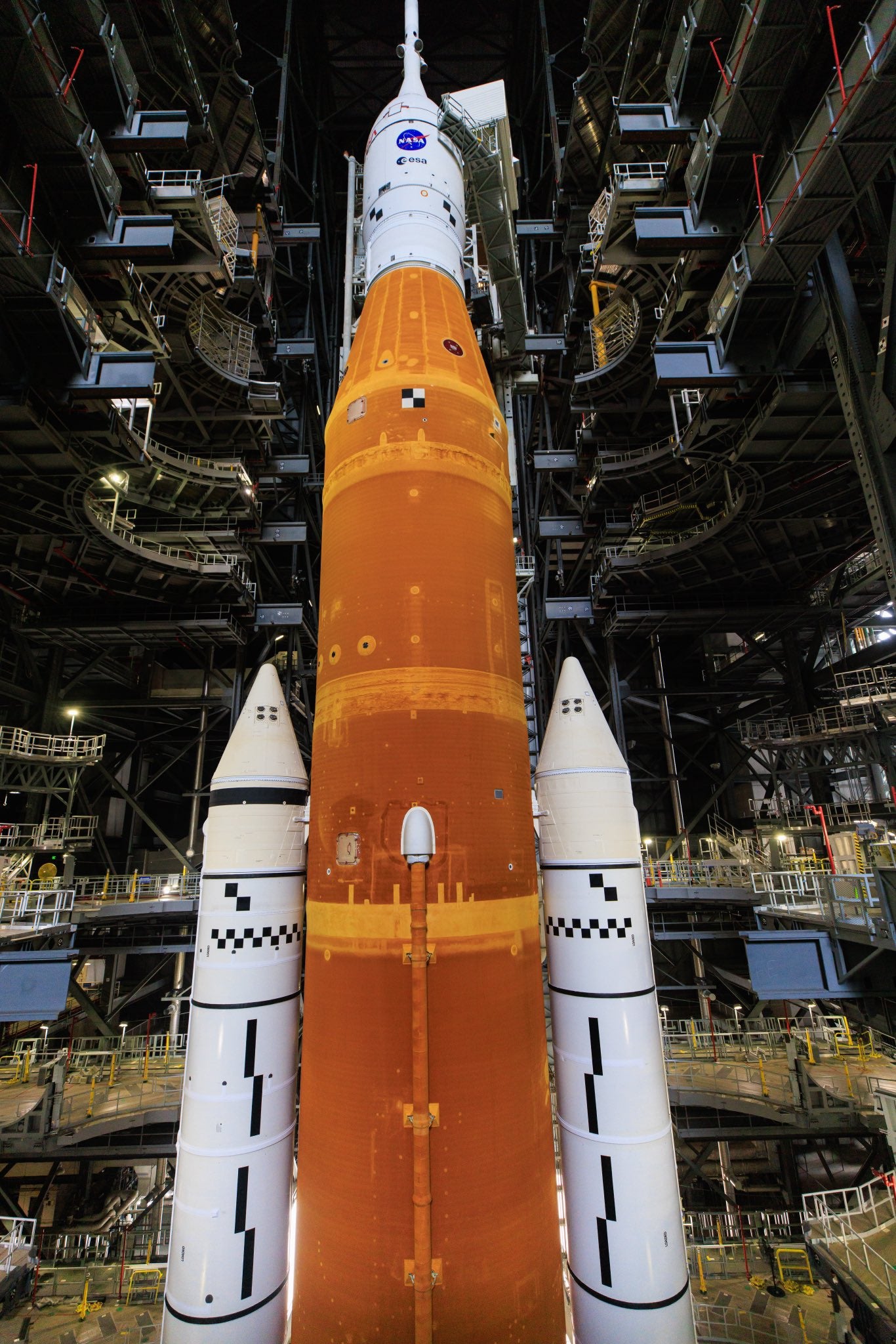After two launch scrubs, an impromptu tanking test, and an awful hurricane, NASA is once again preparing for the inaugural launch of its Space Launch System.
The new targeted launch date for the Artemis 1 mission is Monday, November 14, with a 69-minute launch window that opens at 4:07 p.m. AEDT, as NASA announced today in a blog post. In the event of a scrub, backup launch opportunities exist on Wednesday, November 16 and Saturday, November 19, with launch windows opening at 5:04 p.m. AEDT and 5:45 p.m. AEDT, respectively. NASA is planning to roll the rocket back to Launch Pad 39B at Kennedy Space Centre in Florida on Friday, November 4.

Those launch windows aren’t ideal for viewers on the east coast, but mission planners have to consider a wide range of factors, including the position of the Earth, Moon, and Sun, and other scheduled launches from Kennedy Space Centre. For the Artemis 1 mission, SLS will send an uncrewed Orion capsule on a journey to the Moon and back. The timing must be such that Orion’s solar panels are guaranteed to have ample access to sunlight and that the capsule splashes down in the Pacific ocean during daylight hours, among other considerations.
NASA says “minimal work” is needed to prepare SLS and Orion for the early November rollback to the launch pad. The team carted the 97.84 m-tall rocket back to the Vehicle Assembly Building on September 26, just hours before Hurricane Ian ripped through the region. SLS and the launch facilities at Kennedy emerged unscathed from the tropical storm. Ground teams are currently fixing minor damage to the rocket’s thermal protection system, and also recharging or replacing batteries associated with the flight termination system and secondary payloads.
See more on this story: Artemis 1: To Boldly Go Where Four RS-25 Engines Have Gone Many Times Before
Should SLS blast off on November 14, the total mission duration would last for about 25 days, with Orion’s splashdown expected on Friday, December 9. The capsule will be recovered and thoroughly analysed to make sure it endured a harrowing 5,000-degree re-entry. On its return from the Moon, Orion is expected to hit Earth’s atmosphere at speeds in excess of 32,200 kilometres per hour — the fastest for any crew-rated vehicle.
The first of two SLS launch scrubs occurred on September 29, after a faulty sensor gave erroneous engine temperature readings. The second scrub, on September 3, was the result of an unmanageable hydrogen leak, which led to a cryogenic tanking test on September 22, which proved successful. SLS and Orion have cost an estimated $US50 ($69) billion to develop and each launch of the expendable rocket is expected to cost $US4 ($6) billion. Hopefully, the third launch attempt will prove to be the charm.
More: Why Hydrogen Leaks Continue to Be a Major Headache for NASA Launches
